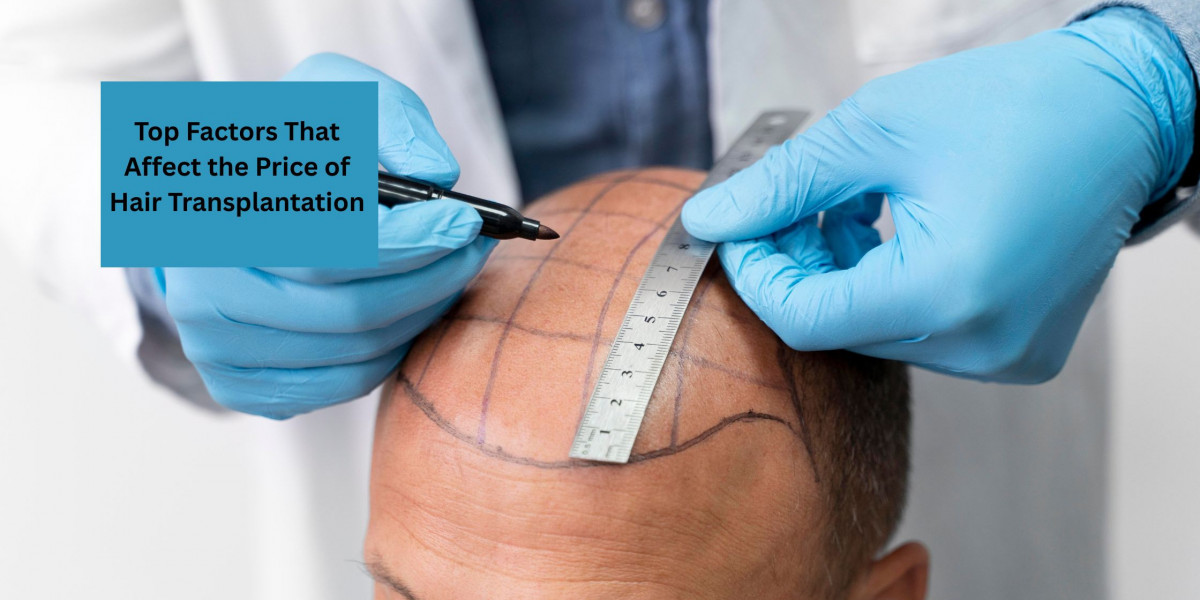Hair transplantation has become a leading solution for those seeking to restore a fuller, natural-looking hairline. However, many are surprised by the price of hair transplantation, which can vary significantly depending on multiple factors. Understanding these cost drivers is crucial to making an informed decision and avoiding unexpected expenses.
Type of Procedure
The type of procedure—FUE or FUT—directly impacts both the cost and the outcome:
- FUE (Follicular Unit Extraction):
- Individual follicular units are extracted one by one from the donor area.
- It is minimally invasive and leaves no linear scar.
- It requires more time and precision, making it more expensive.
- FUT (Follicular Unit Transplantation):
- A strip of skin is surgically removed from the scalp and dissected into grafts.
- Faster and usually more affordable per graft.
- It leaves a linear scar but allows for a larger number of grafts to be performed in one session.
Impact on Cost:
FUE is typically 20–50% more expensive than FUT due to its labour intensity and advanced equipment requirements. FUE with high-precision tools can further increase the price of hair transplantation.
The Area of Hair Loss
The extent and location of hair loss are crucial in determining how many grafts are needed—and, in turn, the total cost:
- Small Areas (like temples or widow's peak):
- Require fewer grafts (e.g., 500–1,000), making the procedure more affordable.
- Large Areas (like the crown or full top of the head):
It may require 2,000–4,000 or more grafts, significantly increasing the cost of hair transplantation.
Impact on Cost:
Larger coverage requires more time, resources, and grafts, which translates into a higher price for hair transplantation. Clinics often charge by the number of grafts used.
Health and Scalp Condition
A patient’s overall health and scalp condition play a key role in both the eligibility and complexity of the procedure:
- Healthy Scalp:
- Better graft survival rates and faster healing.
- Easier extraction and implantation, reducing procedural time and cost.
- Poor Scalp Health (e.g., scarring, inflammation, dandruff):
- It may complicate graft placement and reduce success rates.
- It can require additional pre-treatment or an increase in the number of sessions.
- Underlying Health Conditions (e.g., diabetes, hypertension):
- This may necessitate additional medical supervision or limit procedure options.
Impact on Cost:
A compromised scalp often requires specialised techniques or the services of more experienced surgeons, which can increase the cost of hair transplantation. Clinics may also recommend PRP therapy or other treatments beforehand, which can add to the total cost.
Hair Characteristics
Your natural hair features also affect how easy it is to achieve natural-looking density with fewer grafts:
- Hair Texture (Curly vs. Straight):
- Curly or wavy hair provides better coverage per graft, potentially lowering the total graft count.
- Hair Color vs. Scalp Color Contrast:
- Less contrast (e.g., light brown hair on a light scalp) offers a better illusion of density, requiring fewer grafts.
- More contrast (e.g., black hair on a white scalp) needs more precise planning to ensure a natural appearance.
- Hair Thickness (Coarse vs. Fine):
- Thicker hair shafts provide more coverage per follicle, reducing the number of grafts needed.
Impact on Cost:
If your hair characteristics allow for fewer grafts to achieve full coverage, the price of hair transplantation may be lower. However, challenging hair types may require more advanced techniques and artistic skills, which can increase the cost.
Clinic Facilities and Technology
State-of-the-art facilities and advanced equipment all contribute to the higher cost of hair transplantation. Clinics using precision microscopes, advanced lighting, and trained support teams ensure graft viability but charge accordingly.
Personalized Treatment Plans
A comprehensive hair transplant isn’t just grafted. These enhancements increase the cost of hair transplantation but can improve hair thickness and healing, yielding a more satisfactory final aesthetic. Palm Desert also offers blend packages that include supplemental treatments.
Aftercare and Follow-Up Services
Aftercare plays a major role in final hair growth success. Some providers bundle post-operative essentials into their base price of hair transplantation, while others charge separately for follow-up visits, medications, shampoos, and check‑ins. The Palm Desert clinic includes complimentary follow-ups, though financing may still be required for medications.
Conclusion
Understanding the key factors that influence the price of hair transplantation is essential for anyone considering this life-changing procedure. From the type of technique used (FUE vs. FUT) to the size of the hair loss area, your health, scalp condition, and natural hair characteristics, each factor plays a crucial role in determining the final cost. Ultimately, the best investment is one that delivers natural-looking, long-lasting results from a reputable clinic. A consultation at a reputable Palm Desert clinic will provide you with a clear understanding of your specific needs and a transparent estimate of the total price of hair transplantation. By selecting the right provider and understanding the factors that influence cost, you can make a confident investment in long-lasting, natural-looking results that truly restore your appearance and boost your self-esteem.






